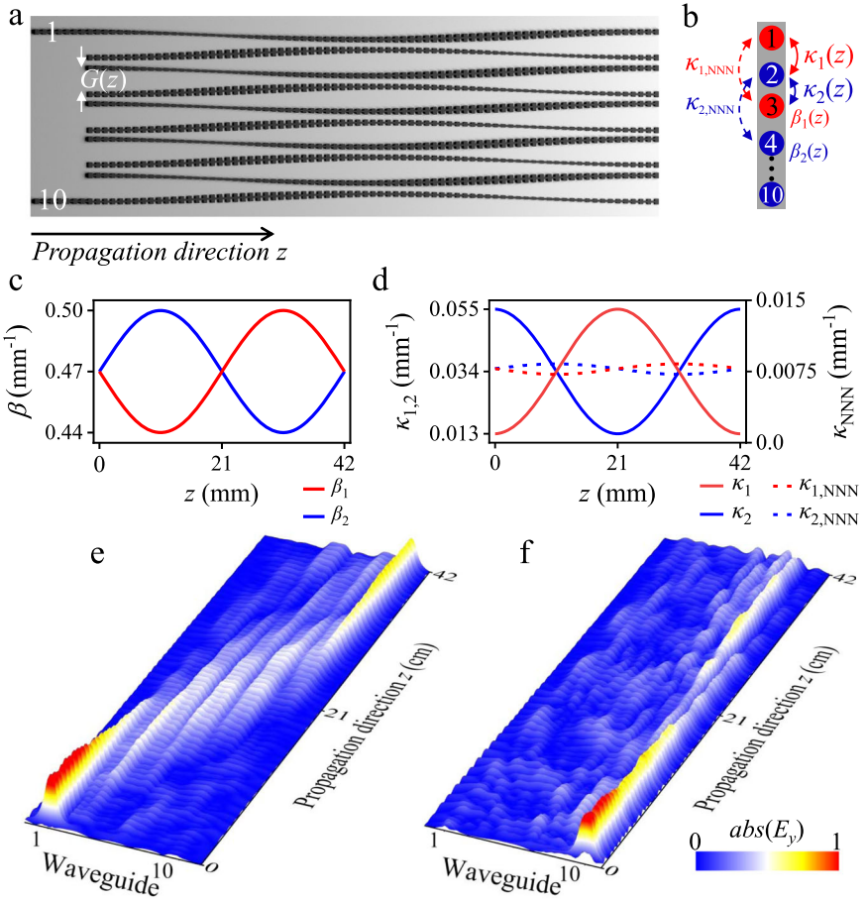In collaboration with Nanjing University, Sun Yat-sen University, Australian National University and Technion-Israel Institute of Technology, Professor Qingqing Cheng from the Future Optics Laboratory led by Academician Zhuang Songlin of the University of Shanghai for Science and Technology, and Professor Qingqing Cheng from the Ultrafest Nonlinear Optics Innovation team, innovatively proposed asymmetric topological transport initiated by non-paraxial. The results were published in Nature Communications, a top international journal. The publication of the results provides a new way for the research of novel integrated photonics elements and a new platform for the study of non-paraxial photonic topology, which makes waveguide arrays have broad application prospects and academic value as a basic research platform.
In recent years, with a series of major advances in condensed matter physics in the field of topological phases, such as topological superconductors, Dirac semi-metals, Weyl semi-metals and Node-Line semi-metals, the degree of freedom of topology has attracted extensive attention. Compared with the excellent performance in the regulation of optical field with intrinsic degrees of freedom, such as photon amplitude, frequency, phase, polarization and angular momentum, the topological phase can further optimize the interconnection performance of integrated photonic chip due to its backscatter inhibition, defect immunity, polarization dependence and high-dimensional topological transport. Therefore, the appearance of topological freedom and topological transport provides a new way for light field regulation and provides a new technical support for photon interconnection. In this study, the propagation constant and coupling coefficient modulation are introduced into the waveguide array at the same time, and the paraxial and non-paraxial problems caused by the time-dependent evolution of the electromagnetic field are investigated. The Rice-Mele model waveguide array is constructed, and the new mechanism of the topology under non-paraxial and paraxial conditions is explored by using the microwave near-field test method. In this paper, the introduction of propagation constant modulation into the design of waveguide array will cause time-dependent changes in the evolution of electromagnetic field. From the application level, whether paraxial and non-paraxial conditions can connect topological states to the photonic interconnection of integrated chip is raised. At the physical level, the fundamental problem of how to describe the evolution of electromagnetic field in non-paraxial photon system is raised. The study of this system has rich physical connotations.
The first authors are Prof. Qingqing Cheng of University of Shanghai for Science and Technology, Associate Researcher Huaiqiang Wang of Nanjing University, and Associate Professor Yongguan Ke of Sun Yat-sen University. Corresponding authors include Professor Yuri Kivshar, Australian National University, Professor Chaohong Li, Sun Yat-sen University, and Dr Yiming Pan, Technion-Israel Institute of Technology.
